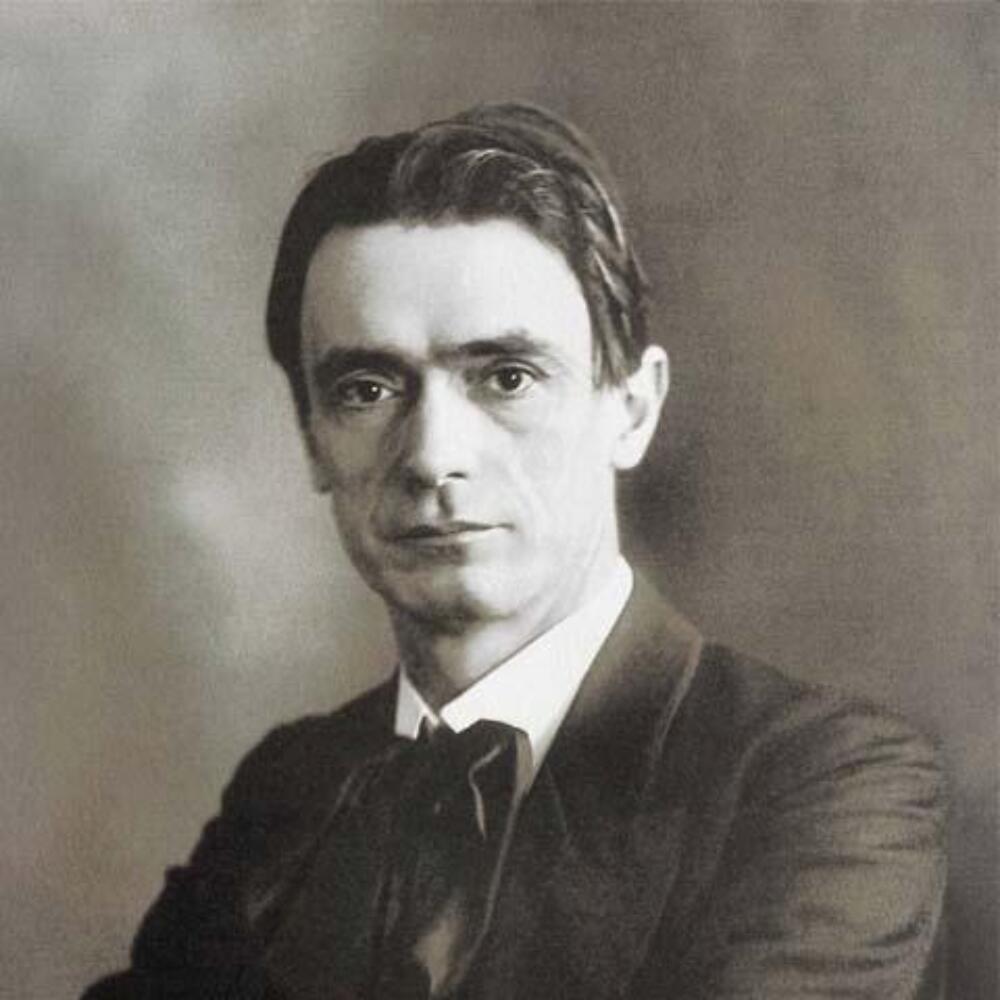Rudolf Steiner
Rudolf Steiner was born on February 27, 1861 in what is now Croatia and died on March 30, 1925 in Dornach, Switzerland. Words to describe the work of Rudolf Steiner: unusual – not easy to approach – filled with stimulating ideas. His monumental projects of drafting an alternative science, a new pedagogy, new perspectives in medicine and agriculture have entered into the spiritual heritage of the present time. They live in today's cultural life as an impulse and an inspiration. The philosopher, scientist and Goethe scholar Rudolf Steiner developed anthroposophy as a "science of the spirit." An individual path of spiritual development, Christcentered at its esoteric core, its fruits are visible in art, social forms and practical initiatives.
1861-1879 Kraljevec, Wiener-Neustadt
Rudolf Steiner was born in Kraljevec (then Austria, today Croatia) on February 27, 1861, as the first child of Franziska and Johann Steiner, from Lower Austria. The family moved several times because of his father’s work, first as a telegrapher and then as a station master with the Austrian South Railway: Mödling in 1862, Pottschach in 1863 and Neudörfl in 1869.
Sister Leopoldine was born in 1864; brother Gustav in 1866. 1879 Abitur with honors.
1879-83 Vienna
Studied at the Technical College, Vienna, initially with the aim of of becoming a secondary school teacher. Main subjects: mathematics, physics, botany, zoology, chemistry, and besides this literature, history and philosophy.
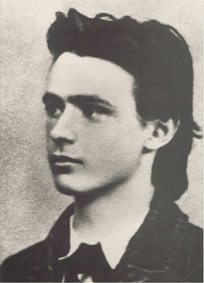
1890-97 Weimar
Worked at the Goethe and Schiller Archives. Edited some parts of Goethe’s work on natural science which appeared 1891–1896.
Meetings with Hermann Grimm, Ernst Haeckel and Eduard von Hartman, friendship with the poetess Gabriele Reuter, Conrad Ansorge, a pupil of Liszt, John Henry Kackay, the biographer of Stirmer, Fritz Koegel, Nietzsche’s editor for the Cotta’s Library Edition.
Steiner provides the «Cotta'sche Bibliothek der Weltliteratur» with a twelve-volume edition of all Schopenhauer's works and an eight-volume Jean-Paul edition. The series «Berliner Klassiker Ausgaben» (with introductions by renowned literary historians) contains the works of Wieland and Uhland, edited and introduced by Rudolf Steiner.
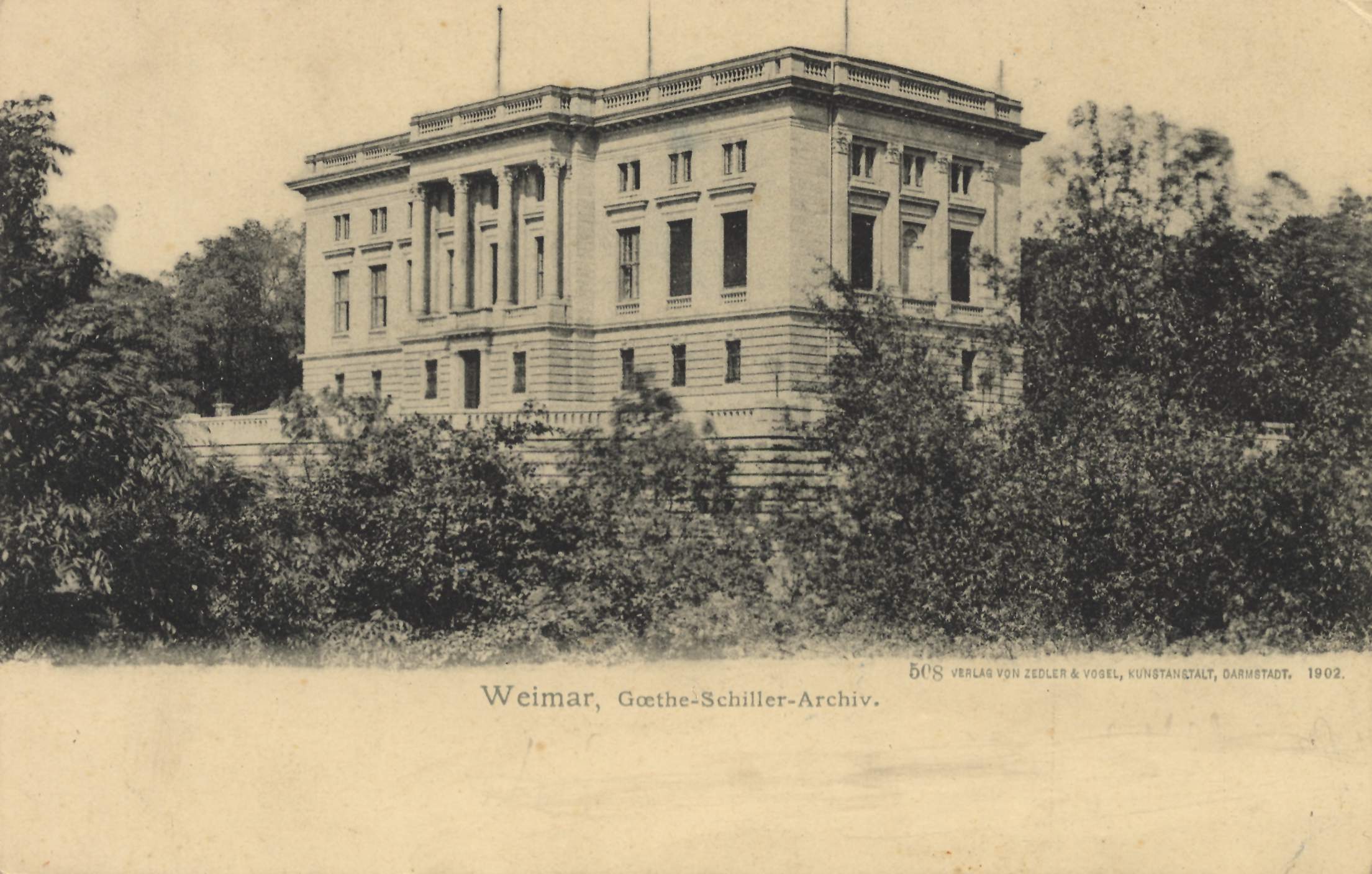
1891-92
Awarded Dr. Phil. by Prof. Heinrich von Stein at the University of Rostock with his dissertation ‘The basic question of theory of knowledge with special reference to Fichte’s theory of knowledge; introduction to an understanding of philosophcial self-consciousness’, published in 1892 under the title ‘Truth and Knowledge; introduction to a “Philosophy of Freedom”’ dedicated to Eduard von Hartmann.
1893
His main philosophic work, «Intuitive Thinking as a Spiritual Path», appears in autumn.
1894-1896
Visits and works in the Nietzsche Archives in Naumburg. Acquaintance with Elisabeth Förster-Nietzsche, who wants to convince Steiner to co-publish her brother’s works. Encounters with the ailing Nietzsche. Steiner’s Nietzsche monograph, Friedrich Nietzsche, a Fighter Against His Time, appears in 1895.
1897
Steiner sums up his Goethe studies in «Goethe’s Worldview».
1897-1900 Berlin
Publisher and editor of «Magazin für Literatur and Dramaturgischen Blätter», the official organ of the German Stage Union. There and elsewhere, numerous articles on literary and philosophical questions, as well as theater and book reviews.

1898-1905
Lectures in the «Free Literary Society», Giordano Bruno-Bund and in a writers’ group, «Die Kommenden», which Steiner leads after the death of Ludwig Jacobowski. Encounters with Else Lasker-Schüler, Peter Hille, Stefan Zweig, Käthe Kollwitz, Erich Mühsam, Paul Scheerbart, Frank Wedekind and with the Friedrichshagener, among others. Friendship with Ludwig Jacobowski and Otto Erich Hartleben. Marriage to Anna Eunike in 1899, who dies in 1911.
1899-1904
Teaches at the school for workers founded by Wilhelm Liebknecht in Berlin. From 1902 also in Spandau. Subjects: History, Speaking Practice, Literature, Science. Encounter with Kurt Eisner and Rosa Luxemburg among others.
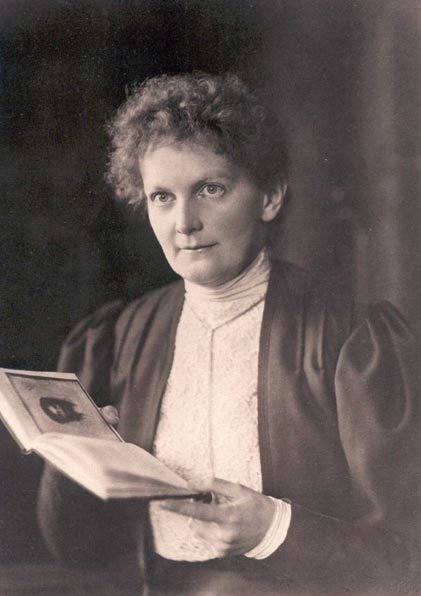
1900
The first volume of Welt- und Lebensanschauungen im neunzehnten Jahrhundert appears; the second follows one year later. Revised and expanded, this work appears in 1914 under the title, «The Riddles of Philosophy».
Lectures in the Theosophical Library on Goethe’s Fairy Tale and Nietsche. In autumn, he begins a lecture cycle on mysticism.
First encounter with Marie von Sivers, who becomes his closest colleague from 1902 onward. She had trained in the art of recitation at a Paris conservatory and in Dramatic Art in St. Petersburg. She is translator of several works by Edouard Schuré.
1901-1902
Mysticism in Modern Thought appears. His second lecture cycle held in the Theosophical Library in 1901/02 also appears, adapted to book form, under the title, «Christianity as a Mystical Fact». Steiner becomes a member of the Theosophical Society and General Secretary of the German Section of the Theosophical Society from October 1902 onward.
Encounter with Annie Besant.
1902-04
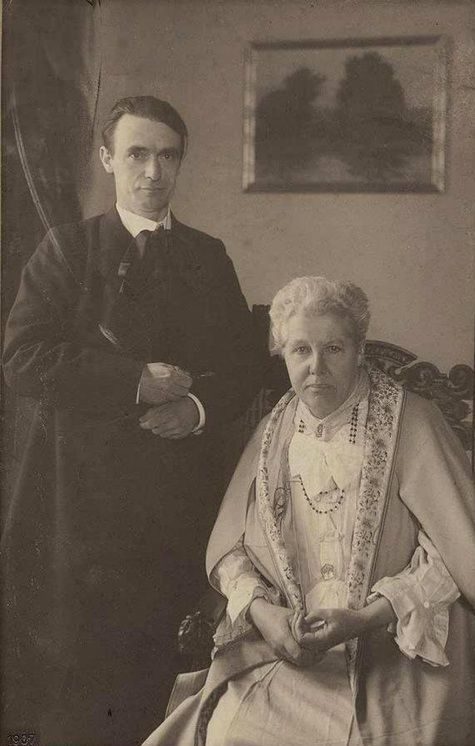
Teaches at an independent college founded by the Friedrichshageners Bruno Wille and Wilhelm Bölsche.
1902-12
Together with Marie von Sivers, builds up theosophical lodges inside and outside of Germany. Lively lecture activity, both for the public and for members of the Theosophical Society.
Founds, publishes and edits the monthly, Luzifer, later called Lucifer-Gnosis (1903). Certain fundamental works appear there in serial form, such as How to Know Higher Worlds, From the Akasha Chronicle, Theosophy and the Social Question, The Education of the Child and Levels of Higher Knowledge. These appeared later in book form.
Friendship with Christian Morgenstern and Edouard Schuré. Encounter with Wassily Kandinsky.
Each winter, public lecture cycles in Berlin’s Architektenhaus, e.g.: «Origin and Goal of the Human Being,» «Metamorphoses of the Soul,» «Answers of Spiritual Science to the Great Questions of Existence.»
1904
Theosophy appears, a central anthroposophical work. It is an introduction to supersensible knowledge of the world and human destination.
1907 International Convention of the Theosophical Society
Directs and produces Schuré’s The Holy Drama of Eleusis, with Marie Steiner in the lead role, as part of a congress of the International Theosophical Society in Munich, organized by him. He also decorates the hall artistically in a way that reveals his future building and art impulse.
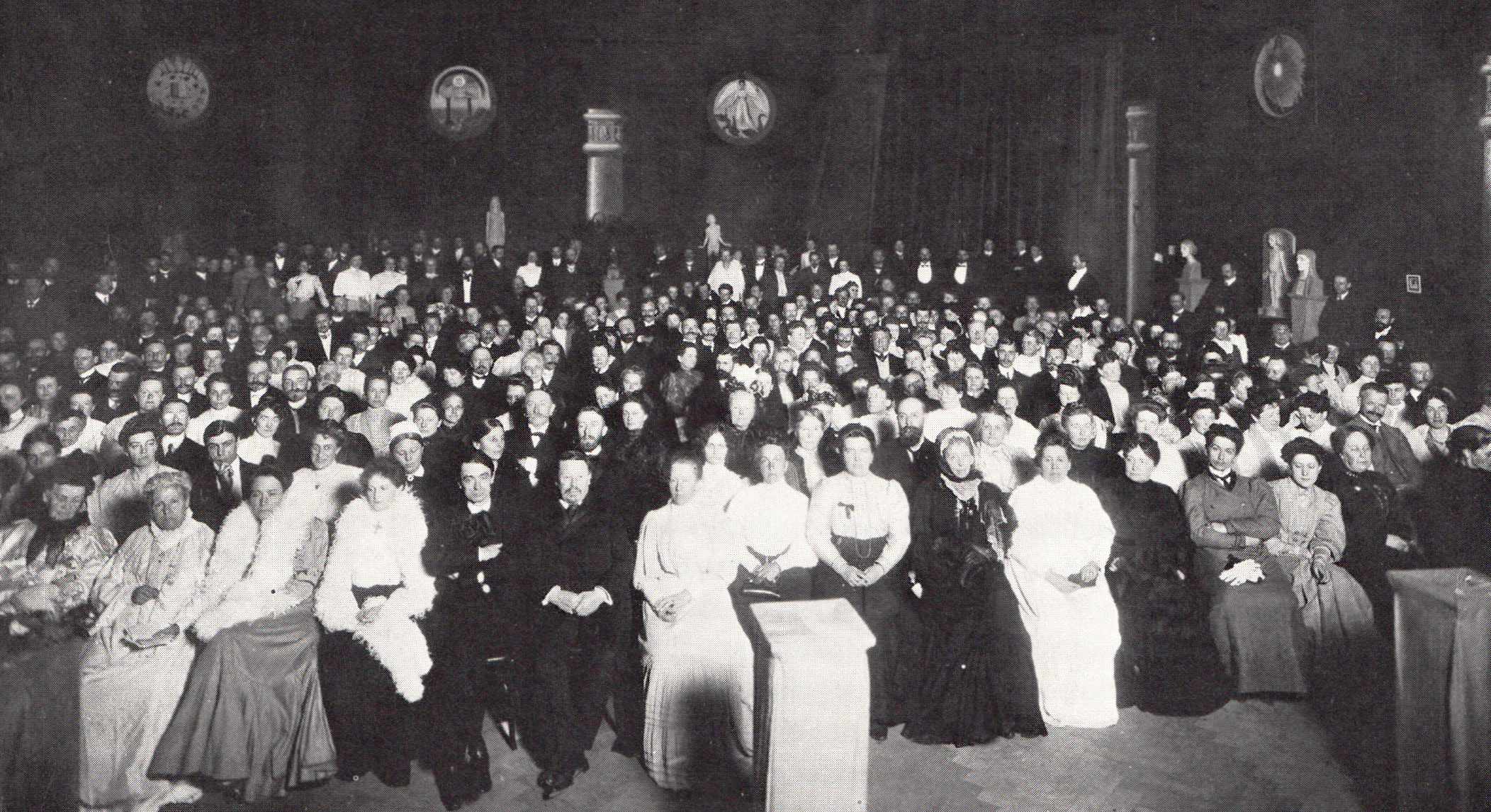
1910
Publication of his research into questions concerning cosmology and evolutionary history raised by An Outline of Esoteric Science.
1910-13
Premiere performances of Steiner’s four mystery dramas, directed by him in Munich.
Design for a building (Johannes-Bau) for artistic performances and meetings of the School of Spiritual Science. This project is thwarted by several adjoining owners and the authorities.
Publishes The Spiritual Hierarchies and their Reflection in the Physical World, A Road to Self-Knowledge, The Threshold to the Spiritual World. Anthroposophy, begun in 1910, remains incomplete. Intensive studies of the senses.
First encounter with the Russian writer, Andrej Belyj (St. Petersburg) in Cologne in 1911, which has a lasting influence on Belyj’s life and work. In Prague, encounter with Franz Kafka and Hugo Bergmann.
Begins to develop a new art of movement called eurythmy (1911). First eurythmy course in Bottmingen, Switzerland in autumn. During the following years, develops eurythmy into a stage art together with Marie von Sivers.
Separation from the Theosophical Society and founding of the Anthroposophical Society (1912/13).
Lectures in various cities inside and outside of Germany on Reincarnation and Karma, the Gospels, Life Between Death and Rebirth, History of the Mysteries, Teaching of the Senses, History of Evolution, etc. Builds up anthroposophical branches inside and outside of Germany together with Marie von Sivers.
1913-19
Builds the Goetheanum, a sculpted, double-domed wooden building, in Dornach, Switzerland. Designed by Rudolf Steiner, the project is carried out with the help of numerous artists from various countries under his direction. Artistic work by Steiner: designs for the sculpted interior and exterior of the building, designs for ceiling murals (some painted by him), designs for colored glass windows, design for a nine meter high sculpture, The Representative of the Human Being, partially carved by him. Steiner himself carries out the main statistic calculations for the building.
Marriage to Marie von Sivers (1914).
An ensemble of other buildings designed by Steiner are gradually built near the Goetheanum (Glass House, Haus Duldeck, Heating Building, Publishing House, Transformer Building); he later designs Haus de Jaager and other homes. The Dornach hill becomes an artists’ colony. Among them are numerous Russian artists, including Assja Turgenieff, Andrej Belyj and Margarita Woloschin. Numerous lectures on art, architecture, contemporary events and spiritual science.
1917
Steiner’s research on the threefold human organism (nerve-sense system, rhythmic system, metabolic/limb system) appears under the title, «The Riddle of Man». Expositions on the relationship between anthropology and anthroposophy.
After discussions with the politician Count Otto Lerchenfeld about the situation in central Europe, Steiner writes two memorandums in which he develops perspectives for a new social form for public life. These are given to influential political personalities in Germany (Kühlmann, Prince Max von Baden) and Austria (Kaiser Karl).
1919
First public eurythmy performance on February 24 in Zurich’s Pfauentheater. Directed by Marie Steiner.
A lecture cycle on «The Social Question» held in Zurich appears in April under the title, Towards Social Renewal. The key idea is to trisect the social organism, that is, to separate the state into a free cultural life, a democratic life of rights and an associative economic life.
Steiner lectures and participates in numerous meetings with workers and industrialists to encourage the formation of works committees.
In autumn, after intensive preparations, the Independent Waldorf School opens in Stuttgart, Germany. Its patron is the director of the Waldorf-Astoria cigarette company, Emil Molt. Steiner is the school’s director until his death in 1925. He offers the teachers courses in education to help them prepare for their task.
1920-25
Numerous public lectures in Germany and elsewhere, as well as lecture cycles for members of the Anthroposophical Society, including- Man: Hieroglyph of the Universe, Cosmosophy- Man as a Symphony of the Creative Word and Karmic Relationships.
In addition, Steiner receives increasing requests for courses and lectures in specific fields, such as education, medicine, national economy, theology, agriculture, physics, acting and curative education.
In Vienna in 1922, an East-West congress with Steiner as the main speaker.
He creates a series of pastel sketches and watercolor paintings as teaching material for painters («Nature Moods» and «Friedwart Sketches»).
Numerous eurythmy performances at various theaters in Germany and beyond, which Steiner frequently introduces with short lectures to explain this new art of movement.
Anthroposophical institutes for research, clinics and other schools are founded.
Regular articles by Steiner in Dreigliederung des sozialen Organismus and Das Goetheanum.
1922-23
The Goetheanum is destroyed by fire on New Year’s Eve 1922/23. All performances and lectures continue unabated, in the carpentry building next to the ruins. Due to his illness in autumn 1924, Steiner only manages to create a model for a second Goetheanum (concrete, finished in 1928).
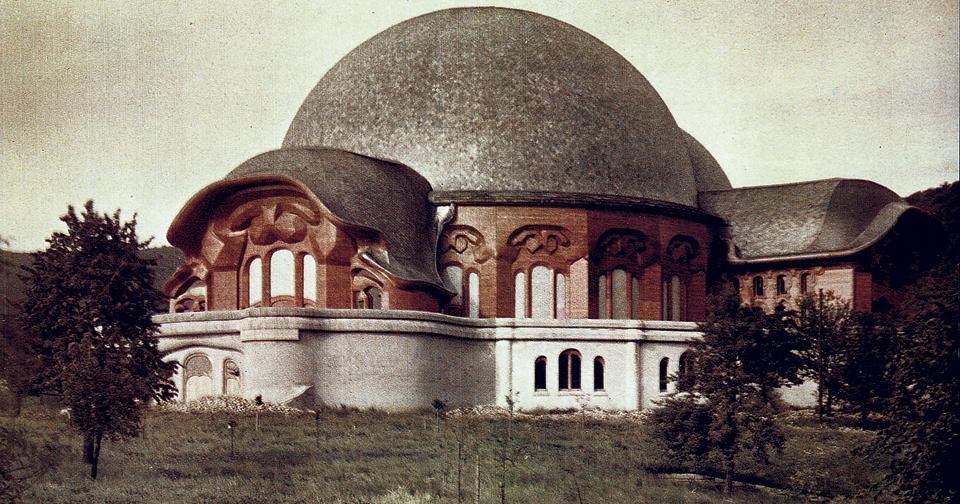
1924-25
Confinement to sickbed begins in autumn 1924. His immense lecture and teaching activity breaks off abruptly. Continues to write his autobiography, The Course of My Life.
Collaborates with Ita Wegman, M.D., on Fundamentals of Therapy. An Extension of the Art of Healing through Spiritual Science.
Writes regular letters and articles for the members of the Anthroposophical Society, offering suggestions for deepening the spiritual work.
Steiner dies in Dornach on March 30, 1925.

